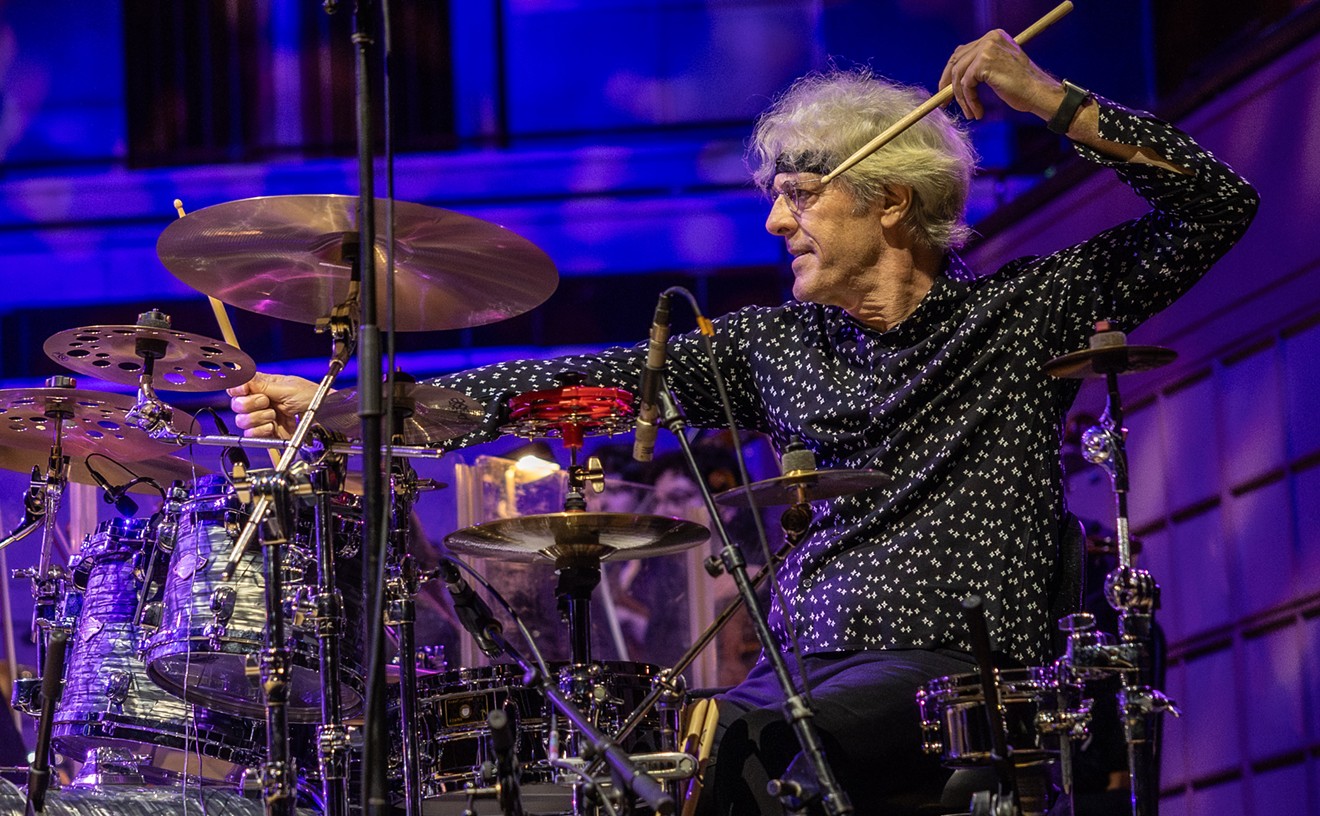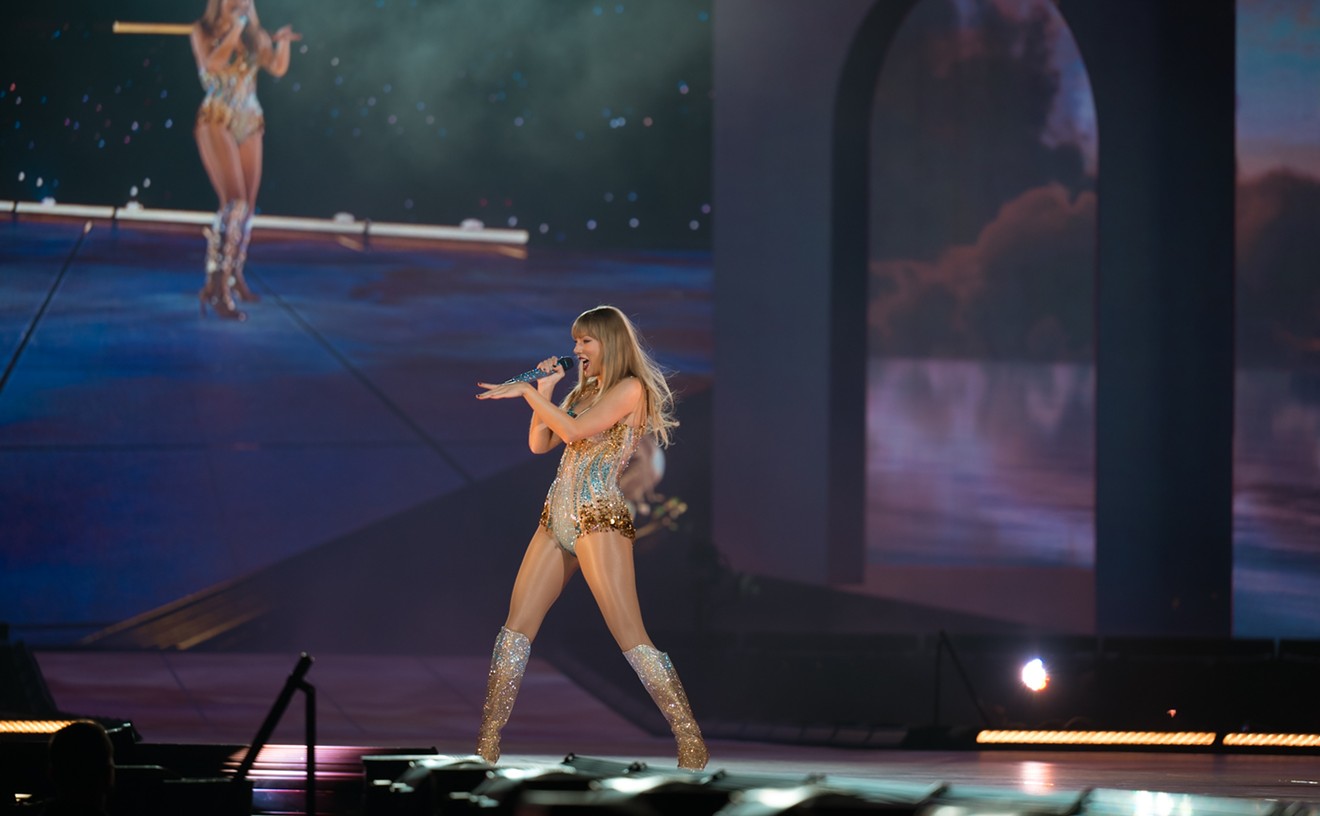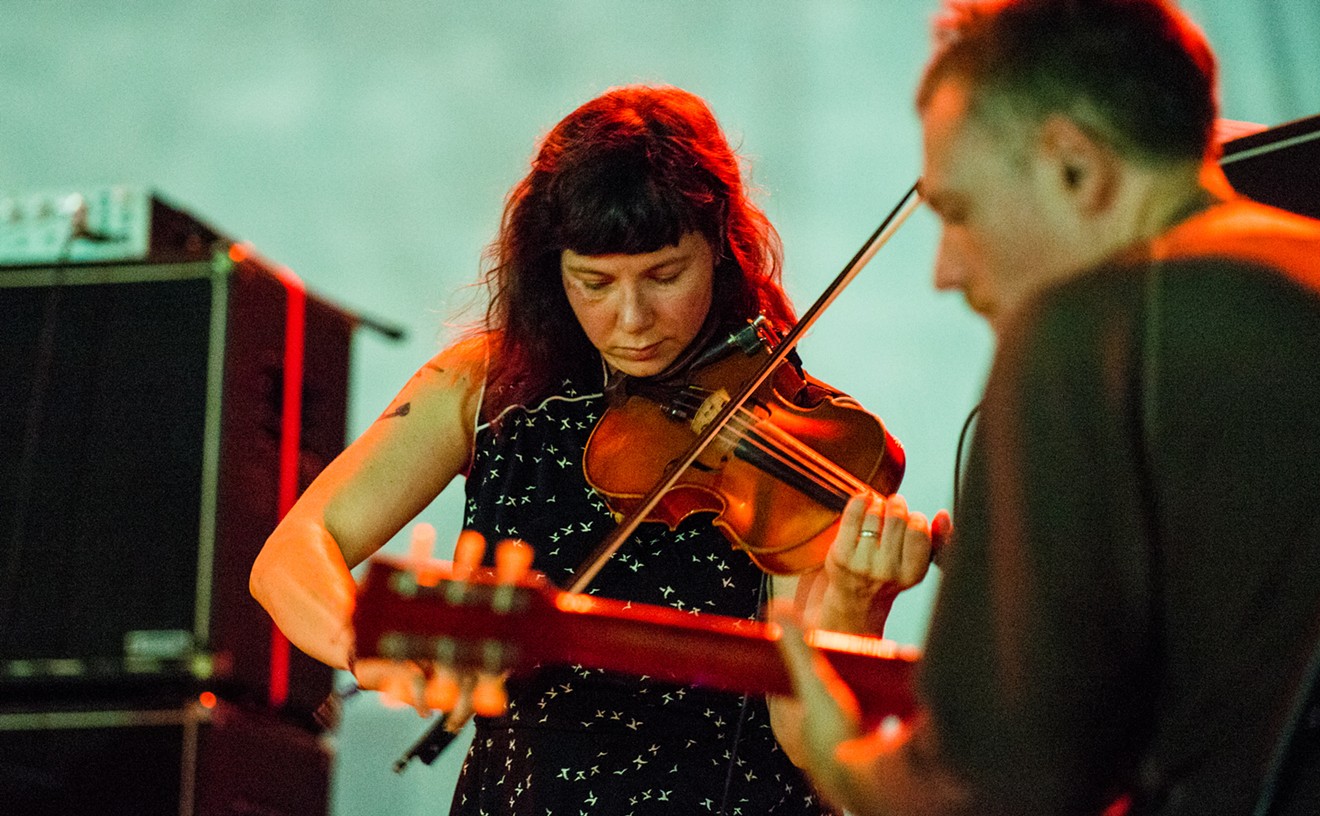With critical objectivities thus sullied all around, it remains to be said that Generation Ecstasy: Into the World of Techno and Rave Culture (Little, Brown), a hefty sociocultural history of rave culture and its soundtracks, is a landmark. As the engine of nearly all that is exciting in modern pop music, the dance and DJ genre has never been the subject of a proper history. (In truth, it's never been deemed worthy of one.) The culture, on the other hand--as if it could really be separated from the music it revolves around--has, and plenty of writers have had a go. Among the best books are Sarah Thornton's 1996 Club Cultures (Wesleyan/New England), a smart set of subcultural sociologies that offers a discussion of club music's pop profile, as well as dissecting sock-hop evolutions and the intersection of the overground with the U.K. rave underground; and Matthew Collin's 1997 Altered State (Serpent's Tail), a good read that gets deeper into the history of DJ music but ultimately finds the British rave scene more compelling than the actual sounds.
Reynolds goes further, fusing sociology, cultural analysis, history, and plenty of solid, close-read music criticism. He's a rock crit by trade--and with a nod to David Toop, perhaps the sharpest chronicler of British DJ music around--as well as a vinyl hound and an all-around data freak, and his hunger to canonize and categorize the mysterious 12-inch miracles that built rave culture is one of the things that makes Generation Ecstasy so essential. His discography pinpoints the first house 12-inch (by general consensus, Jesse Saunders and Vince Lawrence's "On and On"), the first Roland 303 acid house track (Phuture's "Acid Tracks"), the first salvo of mega-sub-bassy Northern England house (Unique 3's "The Theme"), and, like the man said, on and on, tracing the development of jungle, trance, gabba, happy hardcore, and big beat squelch by phase-shifted squelch.
It may seem like useless arcana to some, but no more so than recognizing the place of Chuck Berry's "Maybelline" or James Brown's "Cold Sweat." This is a secret history that, outside of record-shop chat and DJ magazines, simply hasn't existed until now. True, Reynolds is enamored, and maybe overenamored, of dance music's myriad microgenres--hell, he named plenty of them himself. But he does more than just list records and sort styles. He does his best to explicate what each sometimes-minute sonic shift means, the cultural reality it reflects. Thus, the evolution of bells-and-whistles anthems when short DJ sets became the norm at multiartist raves; the growth of darkside and gabba when Ecstasy burnout and amphetamine abuse transformed the psyche of mid-'90s dance floors; the spliff worship that shaped drum 'n' bass and trip hop; and the reactionary move toward ambient and "intelligent" techno.
But it's funny: In much of his critical work, Reynolds has indulged an obsession with musical experience that creates an "apocalyptic now," where past and future, consciousness and critical thought, are whited out in moments of grand mal bacchanal (see his Blissed Out, and some of the gender-blurring blisses in the provocative The Sex Revolts, co-written with partner Joy Press). In the introduction to Generation Ecstasy, he quotes critic Barney Hoskyns from a piece he says "changed all my ideas about music": "What we must lose now," Hoskyns wrote, "is this insidious, corrosive knowingness, this need to collect and contain. We must open our brains that have been stopped and plugged with random information, and once again must our limbs carve in the air the patterns of their desire."
If that isn't the sound of a rock critic trying to shed his skin, then I'm Natalie Imbruglia. Certainly, Generation Ecstasy is informed by a profound need to collect and contain, and it's heavy with what can feel at times like random information. Yet it's this admirable desire to get beyond the facts, ma'am, that gives the book both its veering tension and its bold heart. Like many of us, Reynolds got his utopian imagination fired up after experiencing the synergy of Ecstasy, bootie-shaking, crowded dance floors, dim lights, thick smoke, and loud, loud music. He's not ashamed to suggest this collective art-magic might have the potential for broader social revolution. He's not embarrassed to note that the nut of this potential has a lot to do with drugs (specifically E), or that its stumbling blocks also have a lot to do with drugs (misuse, abuse, and counterproductive laws). After all the dashed promises and self-delusion of late '60s psychedelic culture, he actually has the cojones to suggest that music and drugs might yet be able to change the world. God bless him.
If there is a stylistic drawback here, it's that the freestyle flow between first-person reportage, music criticism, and cultural theorizing is sometimes a bit data-stormy. But as someone who never made it through Gilles Deleuze and Felix Guattari's Capitalism & Schizophrenia, I don't mind the academic shorthand, and it's tough to fault the ambition. To be sure, Generation Ecstasy is an extremely ambitious book--its punk equivalent would blend Jon Savage's England's Dreaming with parts of Dick Hebdige's Subculture: The Meaning of Style and a good chunk of The Trouser Press Record Guide. There is a huge amount of information and provocative musing, and no doubt many sections could be expanded into books themselves--the section on the early post-disco scenes of Chicago (birthplace of house), Detroit (ditto techno), and New York City (ditto garage) is worthy of one, if not three volumes, itself.
As a British-turned-transcontinental critic, Reynolds gets points for the time he spends not just on our first-gen progenitors, but on the fits and starts of the present-day U.S. underground. Because rave never became the pop phenomenon here that it was and is in the U.K., the domestic scenes have evolved much differently. For every one that has "burned out"--say, the first era of San Francisco and L.A. party cultures--there are a dozen other scenes sprouting up around the nation, often in the same cities. These scenes are young, overwhelmingly teenage, and infinitely less jaded than their U.K./U.S. elders. While they have their own histories, many are still sprouts. Reynolds doesn't really get past the surface of scenes in Orlando, Milwaukee, Cleveland, and Minneapolis. But he did slog through the mud with everyone else at the notorious Even Furthur Festival in Bumfuck, Wisc., back in '96, and even devotes a chunk of a chapter to it. I don't think he's gotten to the heart of American rave, a culture that may still be too nascent and atomized for sensible survey.
Obviously hard choices needed to be made for a book of this scope, and I'm sure some people will question the omission of a fuller treatment of disco and gay club history. More curious is the relative absence of American hip-hop, whose connection to rave, "electronica," and jungle has never been adequately discussed. As British phenomena, Tricky, Massive Attack, and the Bristol scene get their due, as does the Mo' Wax label and its Yank MVP DJ Shadow. But among U.S. rap legends, only the Wu-Tang Clan, for some reason, merit some substantive discussion of their music and a place in the discography. De La Soul maestro Prince Paul, Gang Starr jazzbo DJ Premiere, and Public Enemy's Bomb Squad production team--all of whom arguably informed the palette of U.K. rave and trip-hop as much as anybody--do not.
In the end, Generation Ecstasy centers on the British rave revolution (which, to be sure, was no less than a revolution), and the American scene necessarily takes a back seat to that discussion. All told, it's quite a tale; even for neophytes, Reynolds captures plenty of the thrilling madness of the scene, the drugs, the music, the fuck-the-system energy, and all their head-spinning implications. His aesthetic bias toward the hardest hardcore beats may not translate for some, and he can come off sounding kinda knee-jerk with respect to non-danceable, ambient, and "intelligent" techno and jungle as concepts. Personally, I feel he's a bit harsh with the Orb and Future Sound of London (well, Lifeforms, anyway). But he does give high-experimentalists like Aphex Twin and Oval props alongside electro-hardballers Joey Beltram and Ed Rush, and anyway, I'll be the last one to defend the new-agey, one-world fluff of Loop Guru or Sven Vath.
One last gripe: Why did the U.S. publisher of Generation Ecstasy cheat us out of the companion CD included with the U.K. edition? Maybe it was the same sort of licensing problems that prevented the stateside release of the essential U.K.-only CD companion to Greil Marcus' Lipstick Traces. Alas. One only hopes some spirited record labels start reclaiming and reissuing the music history contained in Reynolds' book, which at the moment stands as a definitive volume on a wide world of music.










